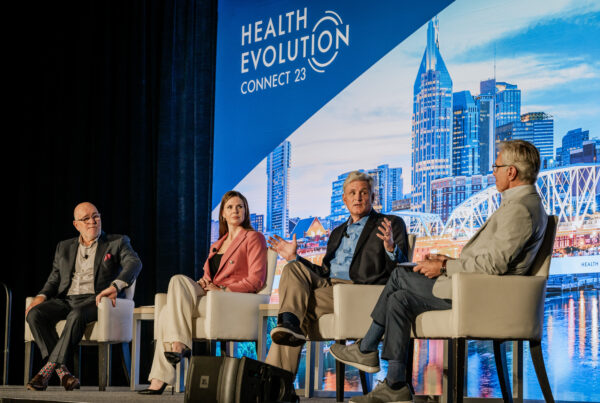Using AI applications to solve a global problem is one transformation emerging from the COVID-19 pandemic that may prove beneficial in the long run.
Health care organizations are quickening the pace of innovation amid the pandemic and federal regulators at the FDA are trying to approve solutions and algorithms rapidly into the market.
“This is about credible computation that can be accomplished at scale and put to work for us as soon as possible,” said Amy Abernethy, MD, Principal Deputy Commissioner, FDA.
Abernethy was joined by Mark McClellan, MD, Director, Duke-Margolis Center for Health Policy & Robert J. Margolis, M.D., Professor of Business, Medicine and Policy at the Health Evolution Executive Briefing Artificial Intelligence and Machine Learning in a webcast discussion lead by Robert Musslewhite, CEO of OptumInsight.
Regulating technology at the speed of a virus
Real-time AI models are being developed around the spread of the virus, patients who are at risk, ICU capacity, personal protective equipment and ventilator resource tracking, and drug shortage.
Making AI tools available in the market to effectively overcome a fast-moving pandemic requires government officials, developers and health organizations to observe the fundamentals of regulation. This means focusing on use cases and models with good data sets that have been validated.
Abernethy noted that the agency needs to cultivate new regulatory approaches to accommodate the fact that AI-based solutions are developed and evolve at a much faster speed than traditional medical products. She said FDA is pressure testing those approaches amid the COVID-19 pandemic.
“It’s really important to have a lot of incredible aspirations [around AI], but right now in the COVID-19 story, we actually have to focus on the things that we can do that are valid, credible and help us make real decisions,” Abernethy said
Abernethy added these models need to be accurate enough to influence important policy decisions — and in this sense, FDA is focusing on receiving clinical trial data that can guide the AI models more effectively.
“Even though the context has changed, the fundamentals that we need to focus on to make sure AI is as effective as possible are really still the same. As Mike Tyson said, ‘Everybody’s got a strategy until they get hit’ and this has been quite a hit but I think people shouldn’t lose sight of is what is making AI applications work right now,” said McClellan, a former Administrator of the Centers for Medicare & Medicaid Services (CMS) and former Commissioner of the FDA as well.
McClellan said he’s seen AI-leading organizations in health care rapidly turning to new sources of data for their models. For instance, he said many are using data from China and looking at associations between patient characteristics and treatments that had an impact on outcomes. Others are using data from cell phones related to social distancing or online thermometer data related to fevers.
“Those working on AI applications need to keep the focus on principles like finding good data. We’re doing a lot of work on policies that need to be in place for reopening different regions of the country. Critical for that is timely data on surveillance and test results,” he said.
Develop evidence—even after the AI is approved
Health care organizations already looking toward AI during the COVID-19 outbreak are either buying it from technology vendors, building the algorithms and tools in-house or partnering to co-develop the AI. Regardless of which approach an organization is taking, CEOs have to ensure their teams comply with regulations now and in the future.
“It’s important to not stop in developing evidence in support of your AI tool as soon as you get through some kind of regulatory hurdles. Make sure you have a strategy not only for how the algorithm is getting better itself but for generating some evidence for the FDA,” he noted.
What makes oversight and regulation of AI even trickier is that not all solutions are directly regulated by the FDA, said Abernethy. Software-as-a-Medical Device solutions are regulated by the FDA, but intelligence-based AI solutions are FDA adjacent, she added. Regardless of what category an AI solution falls into, she said the core principals around regulation stay the same.
Abernethy said that the trends have already been shifting toward increasing the speed of drug and device development and approval, before COVID-19, and now it’s playing out in rapid-fire scale.
“As we move to the other side of the COVID-19 story, one of the top things we’ll need to do is to step back and understand what we learned about how to improve the efficiency of evidence development,” Abernethy said. “How do we make sure that we maintain our commitment to safety and effectiveness but do so in ways that perhaps change up the overall evidence development cycle?”









